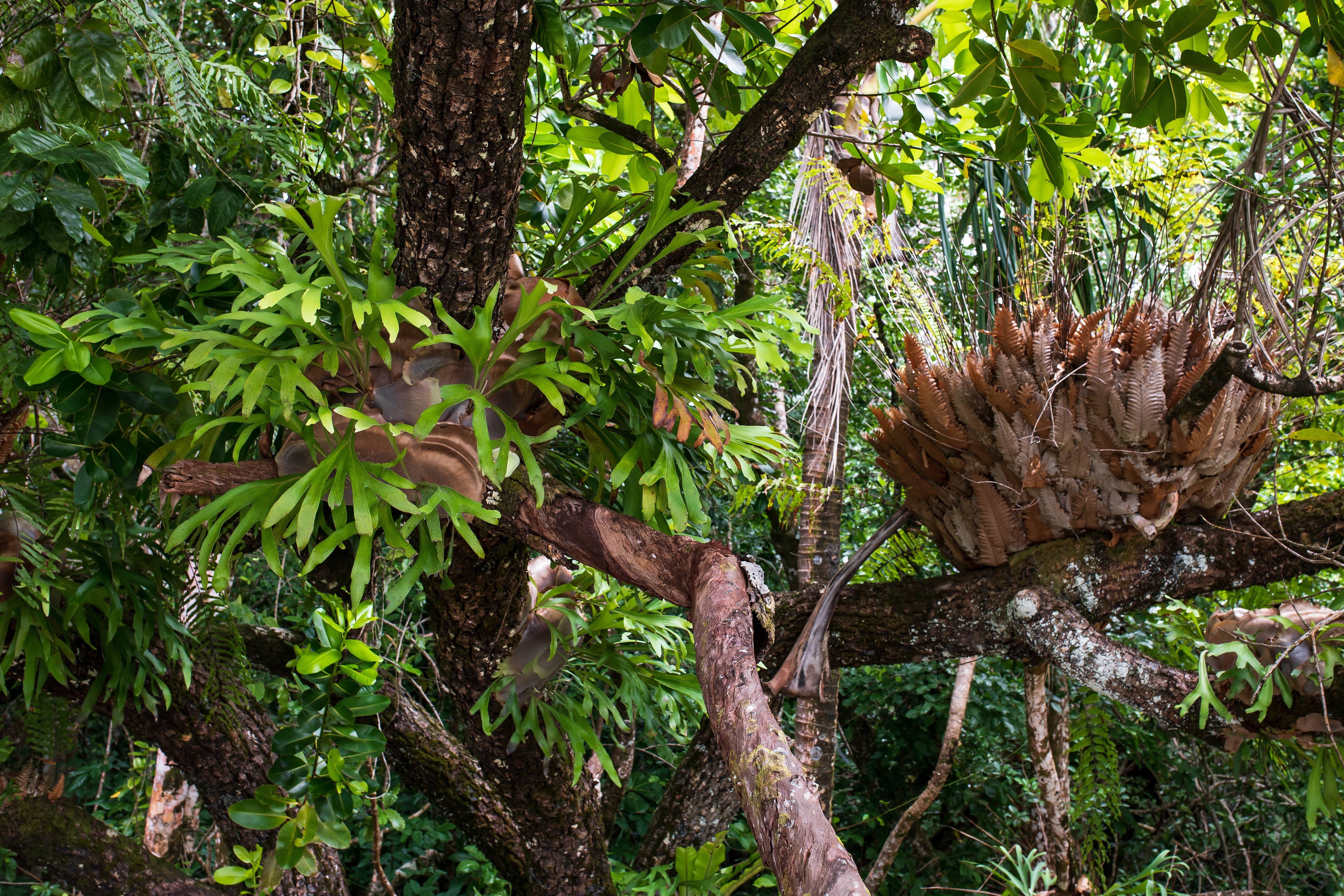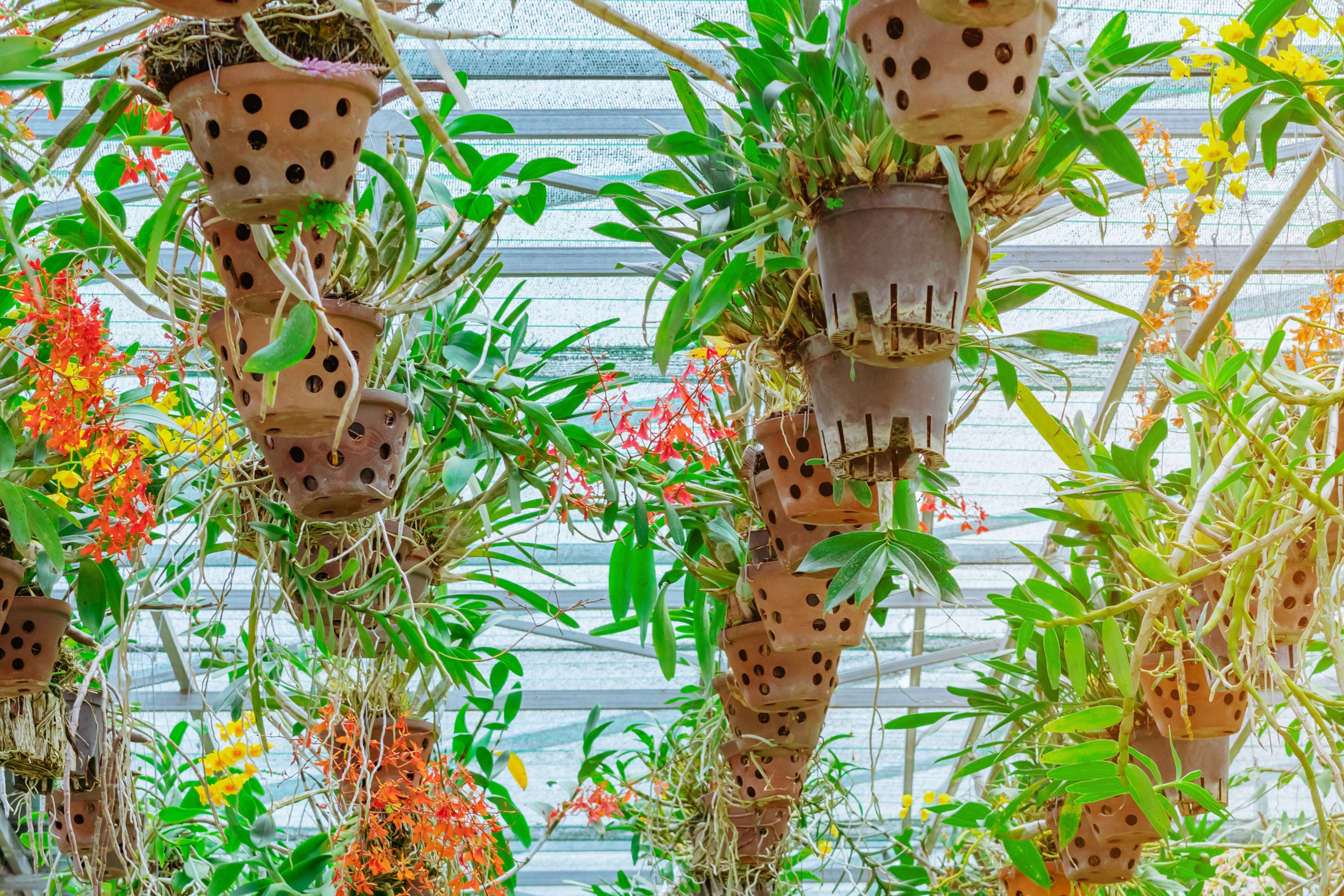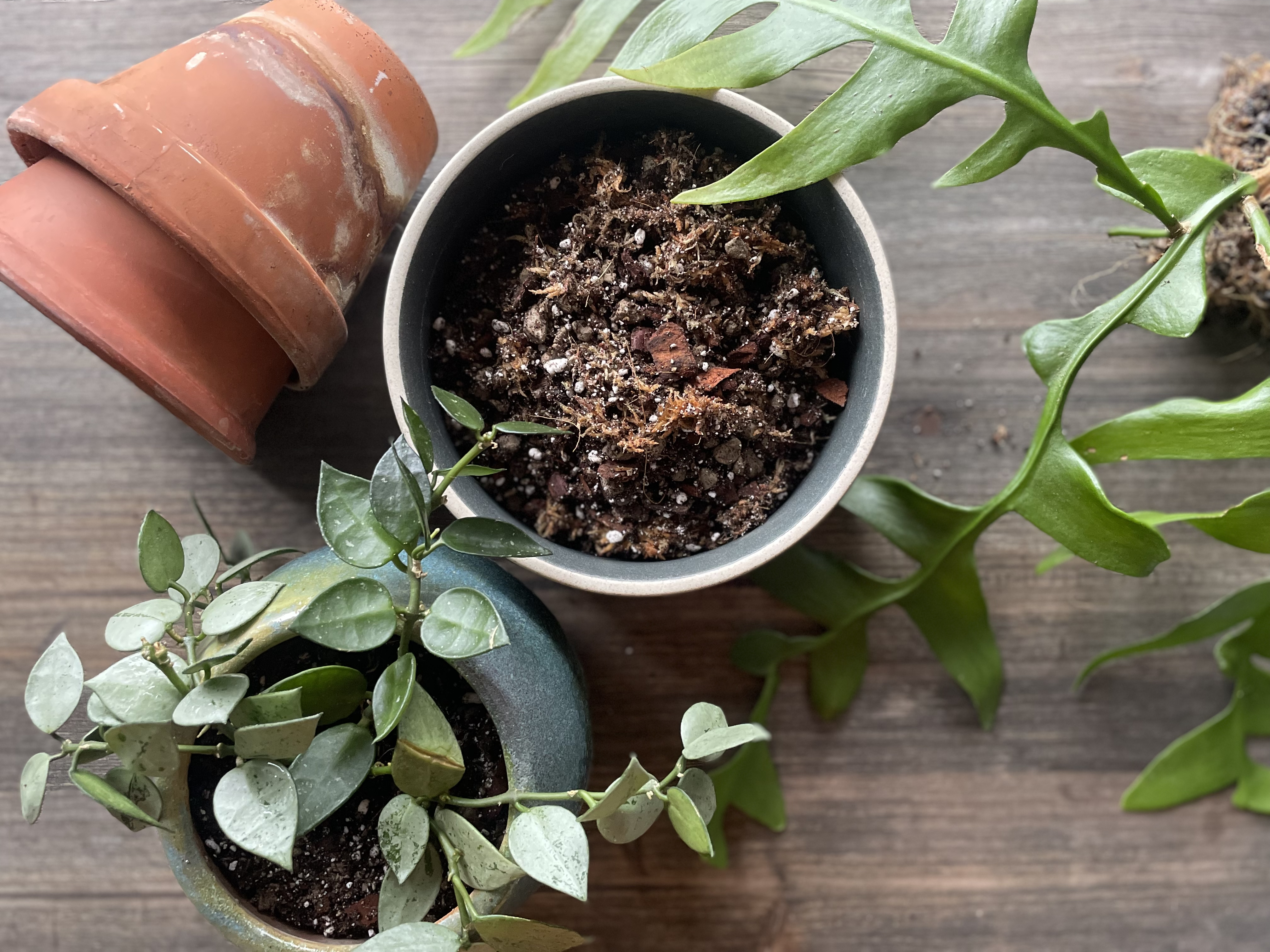Epiphytic plants
You might think most plants grow from the ground, in soil. But just like there are terrestrial plants there's also aquatic plants and plants that doesn't need soil or water to be able to grow.
Epiphytic plants are a type of plant that instead grows on the surface of other plants, rocks, or structures. But compared to parasitic plants, such as Mistletoe, epiphytes do not harm or extract nutrients from their host. Instead, they obtain their nutrients and moisture from the air and surrounding debris.

Some examples of epiphytic plants include
Orchids, which are known for their delicate and colorful flowers.
Bromeliads, which are often used as houseplants and are known for their rosettes of leaves.
Staghorn fern, which reuse their wilting shield frond for nutrients when they grow new ones.
Air plants, which are a type of epiphytic plant that do not require soil to grow and can be attached to a variety of surfaces.
Birds nest ferns who collects both water and debris in the center of the plant. Providing home and food for a number of animals and insects.
Our beloved leaf cacti - Christmas, Easter and Fishbone cactus
One of the most well-known examples of epiphytic plants is the giant epiphytic fern, which can grow up to 80 feet long and weigh several hundred pounds. These ferns are found in tropical rainforests and can be found growing on trees and rocks.
Growing epiphytic plants in cultivation can be challenging because they require specific growing conditions. They need a well-draining growing medium, bright light and a high humidity. If you are interested in growing epiphytic plants, it's important to research the specific needs of the species you are interested in.

Epiphytic plants are an important part of tropical ecosystems. They provide habitat for a variety of animals, including birds, insects, and small mammals. They also play a critical role in the cycling of nutrients in the ecosystem.
In summary, epiphytic plants are a unique group of plants that grow on other plants, rocks, or structures without harming them. They are an important part of tropical ecosystems and can be a challenging but rewarding type of plant to grow in cultivation.
